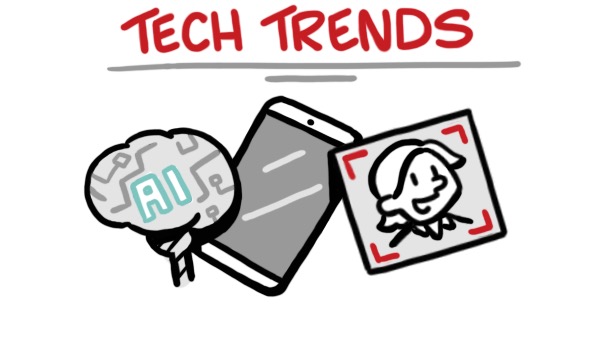Tech Trends 2022

As we move through the final quarter of 2021, it’s undeniable that the transition in 2022 will be perhaps more subtle than we’d like. “In 2022 the COVID-19 pandemic will continue to impact our lives in many ways,” writes Bernard Marr for Forbes, citing the continuing uptick in digitization and virtualization throughout business and society.
Marr contends that the “most important lesson of the last two years or so has been that truly transformative change isn’t as difficult to implement as might have once been thought, if the motivation is there!” From this lesson, Marr is convinced that “the most important trends of 2022 are likely to focus around the convergence of technology trends, as tools emerge that let us combine them in new and amazing ways.”
AI Proliferation
Artificial intelligence, already a staple of modern life, will only become more integrated into everything from algorithms in smart cars that use facial recognition to ensure safe driving, to smartphone AI algorithms that maintain call and photo quality as well as run our multitude of apps, to smart bathroom appliances. “This broad trend encompasses AI, the internet of things (IoT), and newly emerging super-fast networks like 5G, all of which are coming together to augment us with capabilities we didn’t have just a few years ago,” Marr summarizes the AI convergence.
Everything-As-A-Service
Everything-as-a-service, negating the need of every company to “hire an army of computer geniuses to build their own ‘digital brain’ when they can simply lease one for the work they need doing,” will become easier and more common than ever in 2022. “Ready-built AI solutions exist for everything from marketing to HR, project management, and planning and design of production processes…in 2022 we will continue to see companies deploying AI and IoT infrastructure without owning a single server or proprietary piece of cognitive code.”
Composable Applications
Also writing for Forbes is Peter High, relaying Gartner Inc.’s top strategic technology trends for 2022 and beyond. One trend, composable applications, is an interesting outgrowth of the everything-as-a-service idea—“The idea of composable applications highlights that the functional blocks of an application can be decoupled from the overall applications… [and] can be more finely tuned to create a new application that is of greater value than its monolithic predecessor.”
The common thread between composable applications and everything-as-a-service? They’re business tech designed to meet specific needs. Everything-as-a-service addresses consumption models—why pay exorbitant fees to for on-premises tech, only to use it rarely? Subscription-based consumption paired with cloud hosting means everything-as-a-service is the model made to meet your organization’s needs.
Composable apps are the programming equivalent, bypassing the overall applications and superfluous features of the app to allow organizations to select for and against the exact specifics they need. It’s not dissimilar to buying the cable package that makes sense for you, as opposed to the generic, overstuffed package you’re first offered.
Total Experience
Finally, High proposes the Total Experience (TX) model, an “evolution, and in some cases a revolution in customer and employee experience, especially as it pertains to the digital versions of each.” High suggests that “by managing [customer and employee experience] effectively, enterprises should drive better outcomes” but doesn’t elaborate much further. The key lesson on TX seems to be innovation, and the breaking down of silos for a “more holistic approach.” Again, here, we see a move away from “things as they were” and towards “things as they need to be.”
Saurabh Mani Tiwari identifies several of the trends pointed to by Marr and High, starting his list with artificial intelligence and the Internet of Things, as well as going into more depth on 5G, facial recognition and a few others.
Blockchain, NLP, and Beyond
Tiwari departs with emphasis on trends like Blockchain. Predicting that “While cryptocurrencies are now popular, the globe will witness widespread acceptance in the future years, and blockchain technology trends will undoubtedly continue.” Tiwari sees cryptocurrency in the everyday lives of people in 2022 and beyond, predicts a scale-up of “the most recent technical breakthroughs… with smart contract upgrades and improved implementations.”
Perhaps Tiwari’s most interesting expectation is the continuing growth of Natural Language Processing (NLP), currently a fixture of financial marketing that will grow through the need for semantic search. With NLP and NLU (Natural Language Understanding), this “fine-grained understanding of the text’s main concepts” will be used by e-retailers in concert with “machine learning technology to analyze customers’ browsing habits and purchasing patterns.”
From shifts toward cryptocurrency, myriad applications for AI, technology as-a-service and applications designed for composable configuration, 2022 and beyond seems ready to continue to grow beyond the pandemic and into the personalized, streamlined future. Business is primed for greater customization and specification, customers are primed for an easier experience in digital shopping, and may well be in for a new experience in payment.
So, while COVID-19 may not be fully in our cultural rearview mirror, we can take solace in the technological advances that are moving steadily forward as we all work towards a new version of normalcy.
